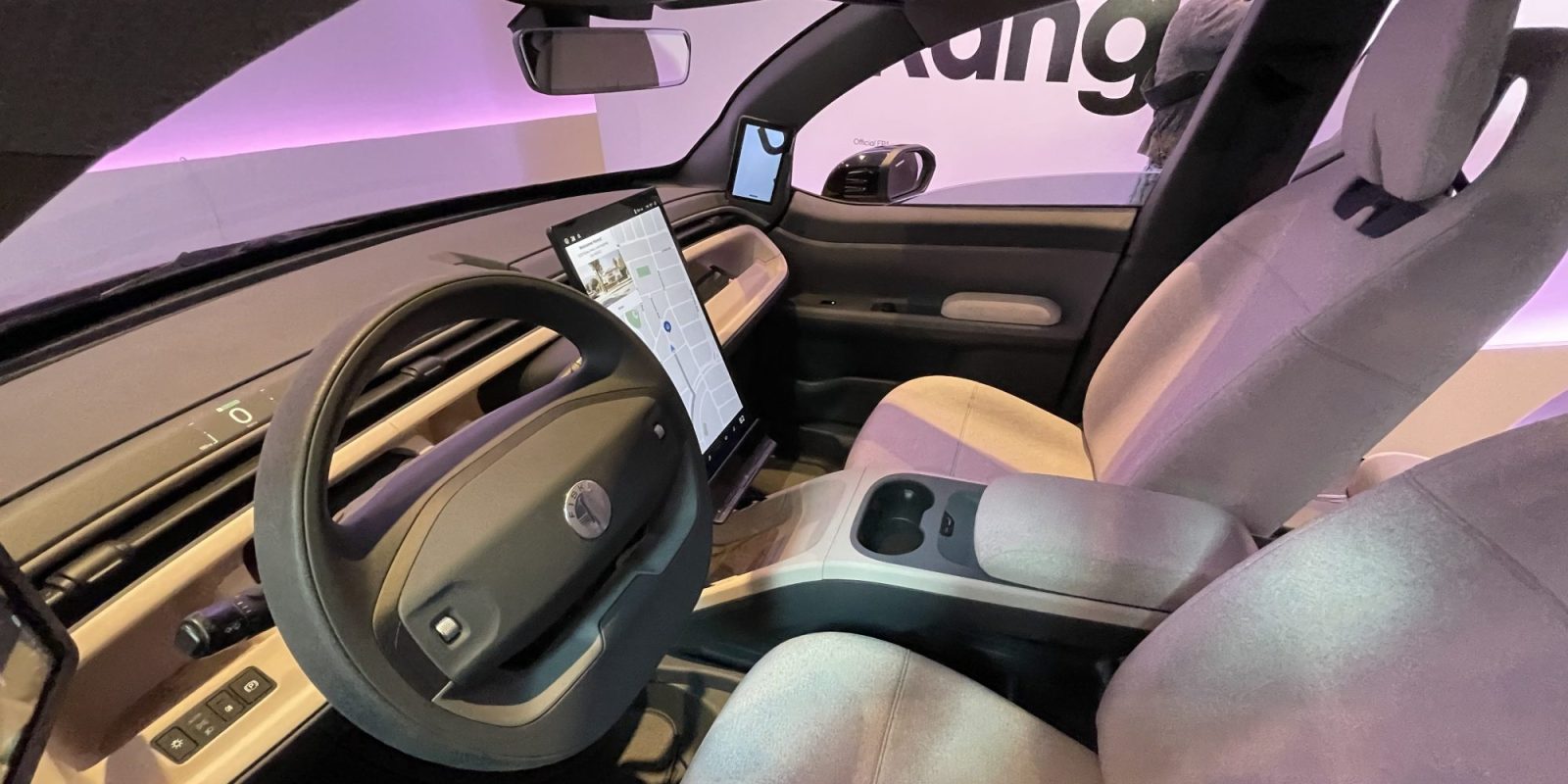We got a chance to get up close and personal with a production-intent version of the upcoming Fisker PEAR, and it looks even better than we expected.
Fisker first unveiled the PEAR at its Product Vision Day in August. We wrote about it at the time, saying that it looked promising but that the promised $30k price and 2025 availability seems quite optimistic, especially for a company that has only just started shipping its first car.
Fisker gave us some more details later that month, but this weekend, we got to see and sit in a “production-intent” version of the PEAR at the Fisker Lounge in The Grove shopping center in Los Angeles, while we were there for a roundtable about the company’s sustainability initiatives.
At the event, Fisker told us all about its focus on making the auto industry more sustainable, especially in manufacturing. We heard from CEO Henrik Fisker, Interior design director Nadya Arnaout, ESG director Patrick Newsom and CTO David King how all of them are incorporating sustainability into every part of their work at Fisker, and how they intend to bring a climate-neutral car to market by 2027.
Then afterwards we got to hop behind the ropes and have a sit inside the upcoming PEAR, which looked and felt great.
We had a glance at the interior at the unveiling event (even though we weren’t supposed to…), and it looked quite spartan, recalling somewhat of a Honda Element vibe.
But in this iteration, the interior seemed much improved from the one we saw just a few months ago. Part of this is because that version had the base “sport” trim and this one had the upgraded interior option. Fisker says the “sport” trim will be less plush, so we might still get some of those Element vibes for those who are looking for them.
Even with these upgrades the interior is still quite spartan, but I like that. There’s still interior storage – a “device shelf” across the largely open dash, with a small ridge that Fisker says will hold devices (though we question whether they’d stay there during “spirited driving”); an open space under the display for small devices or a glasses case; room for a bag under the center console (which doesn’t open, it’s just an armrest); water bottle holders in the door pockets.
We didn’t sit in it for long, but the alcantara-like seat material felt soft and smooth and headroom and legroom were adequate with four adults climbing in and out of the car. Fisker says that there will be an option for a front bench seat that deletes the center console/armrest, bringing the count up to six total seatbelts, though we wonder how wide each of those six people could be.
One feature on display was Fisker’s “see-through A-pillar.” This consisted of a small screen on the inside of the A-pillar, hooked up to a camera on the outside, allowing the driver to effectively see what’s on the other side.

While it’s a neat idea in concept, especially for a city car that is likely to encounter a lot of pedestrians who may be obscured by the A-pillar, the still-prototype version we saw seemed quite chintzy and didn’t work too well. With a little more design focus, it could turn out cool – or drivers could just move their head around a couple inches like they’ve been doing all this time anyway.
The steering wheel was beefy, and seemed impossible to hold at 9-and-3 (which is how you should be holding it). But Arnaout said that Fisker is already working on improving that.

Through the steering wheel was a mockup of the intended driver display, which is rather minimalist and will be integrated into the dash itself. I hope it sticks around in approximately the same form as the mockup (and still functions in bright conditions), because it looked really cool.
We didn’t get to see much from the UI, as it was only running a pre-rendered video. The demo video was buttery-smooth, a stark contrast to the choppy actual software on the Ocean which we had just tested. But the PEAR will use Fisker’s in-house Blade computer, which promises improved performance.
We didn’t sit in the seats with “lounge mode” fully activated, and only saw the 60-split of the rear seat folded down. It didn’t fold down to “flat” as we were promised at the intro event, but it did recline quite far.


Another feature that Fisker is quite proud of is its “Houdini Door,” the rear trunk opening that recesses into the vehicle rather than opening up or out. Fisker says that this will allow easier trunk opening in tight situations, which this city car is likely to be in. Plus, it looks cool – which seems like a primary motivation for a lot of what Fisker does (hey, fair enough).
One thing we didn’t get to see was the frunk, or “froot” as Fisker calls it, which will be a slide-out drawer-style compartment, complete with optional insulation to help keep things hot or cold, as you like.
It was only a quick look at the PEAR, but we came away quite impressed and really looking forward to this small vehicle. Perhaps a worthy successor to the excellent Chevy Bolt, or competitor to the upcoming Boltium or the EX30, which we’re really excited about. Either way, at least we’ll finally get some smaller cars around these parts (but we could always go smaller… or smaller… or even smaller… or minus a couple wheels… but hey, it’s a start).
